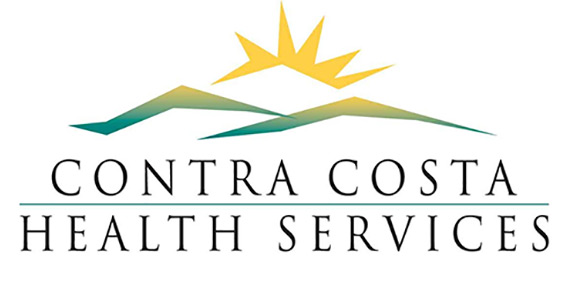On Wednesday, Contra Costa County announced they now have 108 confirmed cases of coronavirus (COVID-19) and 1 death. This is a jump of 37-cases since Monday where they reported 71-cases.
- March 25 – 108 cases / 1 death
- March 24 – 86 cases / 1 death
- March 23 – 71 cases / 1 death
- March 19 – 42 cases
- March 18 – 41 cases
- March 8 – 9 cases
- March 3 – First confirmed case in the county
As of March 24, 2020, 2 p.m. there are a total of 2,535 positive cases and 40 deaths in California (including one non-California resident).
- 707: Community-acquired cases
- 1,828: Cases acquired through person-to-person transmission, travel (including cruise ship passengers), repatriation, or under investigation. This includes 35 health care workers
Ages of all confirmed positive cases:
- Age 0-17: 37 cases
- Age 18-49: 1,278 cases
- Age 50-64: 638 cases
- Age 65 and older: 562 cases
- Unknown: 20 cases
Gender of all confirmed positive cases:
- Female: 1,117 cases
- Male: 1,389 cases
- Unknown: 29 cases
Bay Area School Closures Extended Through May 1
San Jose, CA – Seven Bay Area county health officers, in collaboration with their six county superintendents of schools have made a unified, regional decision to extend school closures and student dismissals from regular school attendance through May 1, 2020 to slow the spread of COVID-19 to the maximum extent possible. The safety and wellness of students, school personnel, and the community are the highest priorities of all schools and districts in these six counties.
Building on the regional coordination the Bay Area jurisdictions took on March 16, 2020 in issuing Health Officer orders requiring all residents to shelter-in-place, the following Bay Area county agencies have been working together over the last several weeks to align strategies and practices during this unprecedented time for public education:
- Alameda County Office of Education
- Contra Costa County Office of Education
- Marin County Office of Education
- San Francisco Unified School District
- San Mateo County Office of Education
- Santa Clara County Office of Education
With the support and collaboration of the Public Health Officers in the respective counties, the County Superintendents of Schools recognized the need to extend the period of school closures and student dismissals through May 1, 2020. School facilities may remain open to staff for the purposes of performing tasks deemed essential by the school district and county offices of education. Education will continue through flexible learning, meals will continue to be provided and, where possible, childcare may be arranged.
During this time, residents are expected to strictly adhere to the “Shelter-in-place” Orders issued by the Public Health Officers on March 16 and stay home except for essential activities until further notification from their local health department.
Seven Bay Area Jurisdictions Order Laboratories Testing for COVID-19 to Report More Comprehensive Testing Data to State and Local Authorities
High Quality Data Essential for Combatting the Spread of COVID-19
Martinez, CA – Seven Bay Area jurisdictions are taking a unified, regional step to combat the spread of the novel coronavirus (COVID-19).
On March 24, the Public Health Officers of Alameda, Contra Costa, Marin, San Francisco, San Mateo, and Santa Clara, with the City of Berkeley, announced an order with new reporting requirements for laboratories that test for the novel coronavirus. Laboratories must report results of tests for all residents of each jurisdiction to the ordering health care provider and the appropriate state and local health officials.
Currently, labs report only positive results, making it difficult for public health officials to know how many people are being tested overall. The new order requires laboratories to report all positive, negative, and inconclusive results, and information that allows health officials to better locate the person tested. The more comprehensive information will improve health officials’ understanding of the rates of infection and the location of possible infection clusters.
Growing availability of testing through commercial and academic laboratories expands the overall testing capacity beyond small, specialized public health laboratories. The public health laboratory network offers only limited testing for emerging infections such as COVID-19 as other commercial and academic laboratory sectors come on-line. Because of the limited capacity of public health laboratories and the absence of further reporting requirements of private laboratories, the current percentage of cases that are detected through testing is important, but reflects only a small portion of the total number of people infected in our jurisdictions.
“This order will ensure public health officials regionally and across the state have access to the information we need to understand, predict, and combat the spread of COVID-19,” said Dr. Sara Cody, Santa Clara County Health Officer. “Commercial and academic l
aboratories are important partners in providing testing to our community. Receiving this critical information from those labs will help local health departments respond to COVID-19 during this unprecedented time.”
The laboratory reporting order follows new data of increasing local transmission of COVID-19, including 930 confirmed cases with 19 deaths shared by the seven jurisdictions. The Bay Area’s total count of 930 confirmed COVID-19 cases is more than half of California’s case count. This does not account for the rapidly increasing number of assumed cases of community transmission.
“Expanding reporting beyond positive results to include timely reporting of negative and inconclusive results allows local health officials to better understand whether there are areas of the community that are experiencing more intense transmission and project future trends in in the spread of the virus,” said Dr. Tomás Aragón, Health Officer, City & County of San Francisco. “By sharing high quality test result data at scale, state and local health authorities can better track COVID-19, predict its spread, and better focus public resources to end this global pandemic.
”For more information about COVID-19 activities in these areas, Alameda, Contra Costa, Marin, Santa Clara, San Francisco, San Mateo, or Berkeley COVID-19 websites

